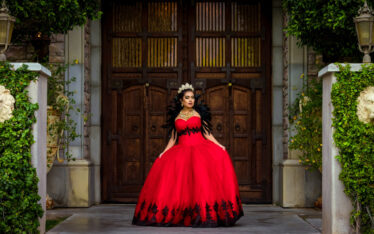Event photographers need an efficient system for preparing and delivering photos to clients. It’s also important to remember that many clients are not necessarily familiar with delivery systems and not all are tech-savvy. So it’s important to clarify how the photos will be delivered to the client. This will ensure that there are no surprises after the assignment. You’ll also want to make it as simple as possible for the client to receive the photos.

While the primary job of an event photographer is to actually take photos, you also need to be aware of your other responsibilities. Preparing, editing, and delivering the photos are also critical. You can make these later phases easier on yourself if you keep certain things in mind as you’re taking shots at the event.
At all times, from shooting the photos to the editing process, it’s important to keep the client’s needs in mind. Remember that their preferences may not be exactly the same as yours. You may, for example, prefer a more stylized interpretation of photos while the client just wants pure realism. You may find the surroundings of an outdoor event fascinating while the client only cares about the people and activities. That’s why you need to communicate specifics with the client, so you are clear about the client’s desires and expectations.
One of the benefits of technology and digital format, is that you can take lots of shots, often hundreds or even thousands. The more shots you take, the better your chance of capturing some exceptional ones. However, taking that many photos also means more work later as you have to look through your work and decide which ones to use. So, you don’t want to overdo it when it comes to quantity. Taking a variety of distinctive shots rather than many that are very similar can make the culling process easier. For example, take shots of someone on stage from different perspectives rather than from the same spot. When shots are very similar, it can be harder to choose among them.

You can go through your photos manually and simply choose the ones you like best or that meet the client’s preferences. You can also use software to make the process go faster. For example, Adobe Photoshop Lightroom provides many useful tools for editing and organizing your photos. As you look through photos, you can rate them on a scale from one to five stars. Then you can select your four and five-star photos for delivery. You can discard any photos that are blurry, distorted, have poor quality lighting, or show subjects in unflattering poses. The good ones can then be either edited or sent as is.
Photo Editing or Post-Production
You will likely want to edit some of your photos before sending them to the client. You can use Lightroom, Luminar, or other comparable software for this. Editing may involve any of the following.
- Manual adjustments – Cropping photos, straightening them, as well as removing distracting details or spots.
- White balancing – To correct for any color issues caused by your subject getting hit from various lights sources at the time of the shoot.
- Saturation – Controlling saturation can make the difference between good and great images. Saturation is defined as “the intensity of a color,” and when it comes to event photography, you want your colors to be vivid but not overwhelming. Too much saturation can wash out an image or make certain elements appear too bright.
- Sharpness – Sharpness is essential for delivering great photos. Using a tripod when shooting, increasing your shutter speed and shooting raw files can all be helpful in delivering crisp and clear images.
While some digital cameras come preloaded with built-in filters for quickly changing up scenes from dull looking into something more visually appealing, nothing beats working directly on RAW files inside professional grade editing suites, where precise manipulations become available at your fingertips!

There are many choices for delivering photos to the client. If you shot and edited your photos in RAW format, you’ll need to convert them to JPEG before you send them. Dropbox, Google Drive, and WeTransfer are all popular options. Pixieset is a site made especially for photographers. One of the simplest ways to deliver photos is to upload them to a gallery on your website and give clients access to download them. You and the client should agree beforehand on where you’ll deliver the photos.
The usual practice is to send the client a large selection of photos so they can select the ones they want. You may agree in the contract to deliver a minimum number of photos. If this is the case, you should watermark the photos before giving the client access. You can remove the watermark from the photos that they select.
Make the Prep and Delivery Process as Simple as Possible
When you are hired to photograph an event, the client just wants to receive great photos as quickly and easily as possible. The best way to give them this is to maintain clear communication throughout the process. Agree beforehand and have it stated in your retainer/contract, the conditions, and timelines of delivery.
With experience, prep and delivery will become a straightforward process that you won’t have to give much thought to.





